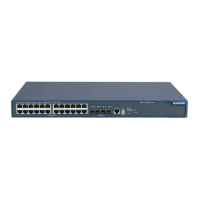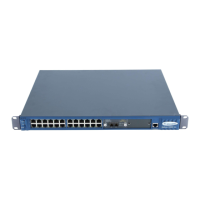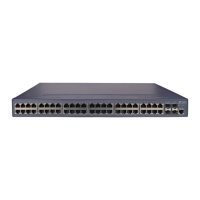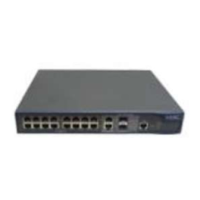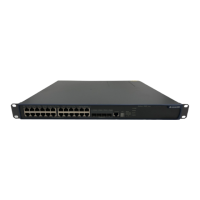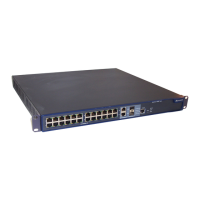Operation Manual – MSTP
Quidway S3900 Series Ethernet Switches-Release 1510 Chapter 1 MSTP Configuration
Huawei Technologies Proprietary
1-11
II. Secondary root bridge configuration
Table 1-5 Specify the current switch as the secondary root bridge of a specified
spanning tree
Operation Command Description
Enter system view
system-view
—
Specify the current
switch as the
secondary root bridge
of a specified spanning
tree
stp [ instance instance-id ]
root secondary
[ bridge-diameter
bridgenumber ] [ hello-time
centi-seconds ]
Required
Using the stp root primary/stp root secondary command, you can specify a switch
as the root bridge or the secondary root bridge of the spanning tree instance identified
by the instance-id argument. If the value of the instance-id argument is set to 0, the stp
root primary/stp root secondary command specify the current switch as the root
bridge or the secondary root bridge of the CIST.
A switch can play different roles in different spanning tree instances. That is, it can be
the root bridges in a spanning tree instance and be a secondary root bridge in another
spanning tree instance at the same time. But in one spanning tree instance, a switch
cannot be the root bridge and the secondary root bridge simultaneously.
When the root bridge fails or is turned off, the secondary root bridge becomes the root
bridge if no new root bridge is configured. If you configure multiple secondary root
bridges for a spanning tree instance, the one with the least MAC address replaces the
root bridge when the latter fails.
You can specify the network diameter and the Hello time parameters while configuring
a root bridge/secondary root bridge. Refer to section
1.2.8 “Network Diameter
Configuration” and
1.2.9 “MSTP Time-related Configuration” for information about the
network diameter parameter and the Hello time parameter.

